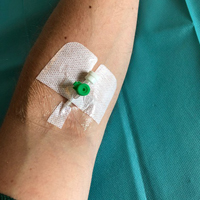 Smart Citations
Smart CitationsSee how this article has been cited at scite.ai
scite shows how a scientific paper has been cited by providing the context of the citation, a classification describing whether it supports, mentions, or contrasts the cited claim, and a label indicating in which section the citation was made.
Intravenous access placement and fluid administration appropriateness in the emergency department
The aim of this study is to assess practice and effectiveness of Peripheral Venous Catheter (PVC) insertion and intravenous fluid administration in the Emergency Department (ED). A prospective study was conducted at a single primary ED in Brescia, Italy. 455 participants were included in the analysis. PVC were placed in 88 % of patients, 18 gauge catheters were the most frequently used (63%). In 360 patients PVC placement required one attempt. In 99 % of patients PVCs were used at least once. Fluid administration was considered appropriate in 23 patients. Out of 402 PVC placements, 244 were not necessary (in 225 patients PVCs were used only for blood samples withdrawal, and in 16 patients they were used for blood samples withdrawal, and inappropriate fluid administration). We concluded that a large number of PVC placements in the ED was potentially avoidable, and, when PVCs were used for IV fluid administration, the indication was often inappropriate. Physicians should carefully assess the real need of PVC placement in patients admitted to the ED and critically assess some issues of everyday practice, like PVC placement or IV fluids prescription, with evaluation of cost savings.
How to Cite
PAGEPress has chosen to apply the Creative Commons Attribution NonCommercial 4.0 International License (CC BY-NC 4.0) to all manuscripts to be published.

 https://doi.org/10.4081/ecj.2021.9150
https://doi.org/10.4081/ecj.2021.9150




